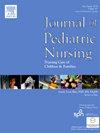获奖海报:通过合作方式转变文化:护士和医生消除偏见,在儿科病房提供公平的护理
IF 2.3
4区 医学
Q2 NURSING
Journal of Pediatric Nursing-Nursing Care of Children & Families
Pub Date : 2025-09-01
DOI:10.1016/j.pedn.2025.06.032
引用次数: 0
摘要
儿科护士在倡导对不同患者群体的公平护理方面至关重要,包括有色人种、英语水平有限的人、残疾人、贫困患者和LGBTQIA+人群。26张床位的儿科病房实行以家庭为中心的查房,旨在通过透明度和与家庭的合作来尊重和提供平等的体验。这种方法使父母能够与医疗团队就孩子的医疗保健需求进行共享、知情的决策。为了更好地满足我们服务不足的患者的需求,医生团队与护理人员合作开发了健康公平登记工具。这一工具促进了主治医生、住院医师、实习生和收费注册护士之间的轮前会议,以讨论提供公平护理的任何潜在障碍。在以家庭为中心的轮次之后,团队再次开会讨论如何改善所有家庭的沟通和教育。在实施该工具之前,单位领导调查了所有主管护士,以评估他们对如何有效地提供公平护理的看法。在我们的预调查结果中,主管护士认为我们楼层的病人偶尔或非常频繁地得到公平的护理。当被问及主管护士在识别和讨论卫生不平等问题时感觉如何时,答案从非常不舒服到非常舒服不等。当被问及护士在讨论当前角色中的健康不平等时感觉如何时,答案从非常不舒服到非常舒服不等。使用健康公平检查工具的目标是识别任何潜在的隐性偏见并加以管理,关注健康的社会决定因素,并以患者首选的口语向他们提供医疗更新。所有患者和家属都应该并且需要获得卫生保健资源,特别是在住院期间。我们的计划是继续在单位内每天使用健康公平登记工具,并在1月份对主管护士进行一次事后调查,届时单位领导将收集和审查我们的数据。本文章由计算机程序翻译,如有差异,请以英文原文为准。
Winning Poster: Transforming culture through a collaborative approach: Nurses and physicians dismantling bias to provide equitable care in a pediatric unit
Pediatric nurses are essential in advocating for equitable care for our diverse patient populations, including people of color, those with limited English proficiency, individuals with disabilities, patients experiencing poverty, and those who identify as LGBTQIA+. The 26-bed pediatric unit practices family-centered rounds, aiming to respect and provide equal experiences through transparency and collaboration with families. This approach empowers parents to engage in shared, informed decision-making with the medical team regarding their child's healthcare needs. To better meet the needs of our underserved patients, the physician team, in collaboration with nursing staff, developed the Health Equity Check-In Tool. This tool facilitates a pre-round meeting among Attending Physicians, Residents, Interns, and Charge RNs to discuss any potential barriers in providing equitable care. After family-centered rounds, the team reconvenes to discuss how to improve communication and education for all families. Before implementing this tool, unit leadership surveyed all charge nurses to evaluate their perceptions of how effectively equitable care was provided. In our pre-survey results, charge nurses felt that patients on our floor received equitable care occasionally or very frequently. When asked how comfortable charge nurses felt identifying and discussing health inequities the answers varied from extremely uncomfortable to extremely comfortable. When asked how comfortable nurses felt discussing health inequities in current roles, the answers varied from extremely uncomfortable to extremely comfortable. The goal in using the Health Equity Check-In Tool is to identify any potential implicit biases and manage those, focus on social determinants of health, and to provide medical updates in patients in their preferred spoken language. All patients and families deserve and need access to health care resources especially during a hospital stay. The plan is to continue using the Health Equity Check-In Tool daily in the unit and to conduct a post-survey for the charge nurses in January when unit leadership will collect and review our data.
求助全文
通过发布文献求助,成功后即可免费获取论文全文。
去求助
来源期刊

Journal of Pediatric Nursing-Nursing Care of Children & Families
NURSING-PEDIATRICS
CiteScore
3.70
自引率
8.30%
发文量
291
审稿时长
65 days
期刊介绍:
Official Journal of the Society of Pediatric Nurses and the Pediatric Endocrinology Nursing Society (PENS)
The Journal of Pediatric Nursing: Nursing Care of Children and Families (JPN) is interested in publishing evidence-based practice, quality improvement, theory, and research papers on a variety of topics from US and international authors. JPN is the official journal of the Society of Pediatric Nurses and the Pediatric Endocrinology Nursing Society. Cecily L. Betz, PhD, RN, FAAN is the Founder and Editor in Chief.
Journal content covers the life span from birth to adolescence. Submissions should be pertinent to the nursing care needs of healthy and ill infants, children, and adolescents, addressing their biopsychosocial needs. JPN also features the following regular columns for which authors may submit brief papers: Hot Topics and Technology.
 求助内容:
求助内容: 应助结果提醒方式:
应助结果提醒方式:


